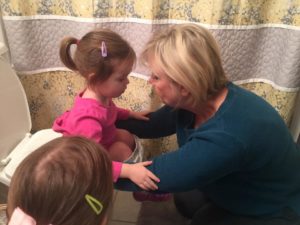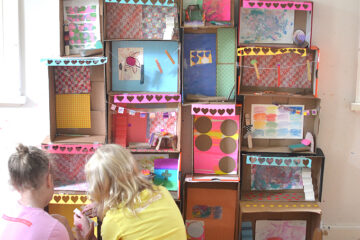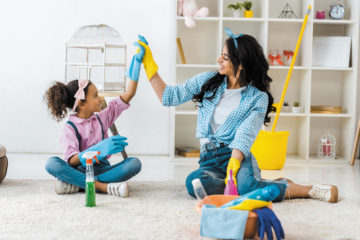[av_textblock size=” font_color=” color=”]

My first born child couldn’t have been easier to potty train. It went smoothly and frustration levels never hit the roof. In fact, I was amazed at how easy it was. So, naturally I thought it would be that easy with my second child. She was showing all signs of being ready: She wanted to sit on the potty, refused to wear a pull-up and only wanted underwear, wanted to be like her big sister, etc., etc. As we started this potty training journey, I soon realized that it was going to cause headaches, frustration and doubt that it was ever going to happen. I obviously know she will get there eventually, but the reality set in when after 4 weeks of trying and trying some more, sitting on the potty for several minutes at a time, and cleaning up more messes I care to count, there was something going on more than just potty training.
I put a message on my Facebook wall to ask for help from some seasoned momma’s and that is when several people reached out to me about Delise’s Sensory Processing Disorder (SPD). Duh! Why hadn’t it occurred to me that this could be related to SPD? So, like I do in true Mary fashion, I started researching it and looking into books about it (thanks Julie). I was AMAZED at what I started reading and how SPD and potty training go hand in hand! Here is what I found:
Interoception is our ability to sense what is going on inside our bodies internally. It includes sensations such as thirst, hunger, fatigue, pain, breathe, itchiness, nausea, temperature, etc. It also includes our sense of if we have a full bladder or bowel, and if we have “released” it.
When our body is able to receive and interpret the signals from our skin, muscles, and joints, we are able to feel and know what our body is doing without looking at it. When a child has poor body awareness, it can lead to difficulty coordinating their body to do all of the components that are involved in toileting. It is not automatic to feel the urge to go and just go to the bathroom. Each step of the task must be thought out and carefully performed, so it is important to be patient. It’s hard to know what to do if you can’t feel what you are supposed to feel!
Typically, toddlers and preschoolers spend a lot time learning the “ins and outs” of toileting. Children are expected to be toileting independently before entering Kindergarten. Children with difficulties modulating sensory input find potty training to be a much bigger challenge than a typical child. The bathroom can be an overstimulating environment, so asking a child with sensory integration difficulties to focus on the task at hand (ie; peeing or pooping) is a challenge if they are overwhelmed with fear or anxiety about other sensory signals they are receiving.
TOILETING AND SENSORY PROCESSING RELATED TO POOR INTEROCEPTION
- May be unaware that his bowel or bladder is full.
- Feels that they need to go, but not be able to discriminate whether they need to urinate OR have a bowel movement.
- Unable to “push” in order to go; don’t understand how to make those muscles work
- Cannot feel that they have had an accident or that their clothes are soiled.
- Unable to bend and reach behind them to properly wipe
Here are 8 tips for potty training your child with Sensory Processing Disorder:
- Prepare your child by reading a toilet training book. Children learn well with visual supports. Books like Once Upon a Potty written by Alona Frankel provide humorous visuals for both boys and girls. Sesame Street had made a video titled Elmo’s Potty Time that eases a child’s toileting anxiety with songs and rhymes.
- Prepare the bathroom for sensory sensitive children by provide soft lighting, soft toilet tissue, and making the bathroom as quiet as possible. For sensory seeking children, provide bright light with fun music.
- Be aware of the techniques that help calm your child. If your child enjoys deep brushing or hugs, provide these prior to sitting him on the toilet seat.
- Provide a padded toilet seat for your child to combat tactile sensitivities to cold temperatures as the seasons change.
- As your child transitions from pull-ups to underwear, be conscious of seam placements and the material of the underwear.
- Give your child a fun experience by allowing him to choose which underwear to buy– after all, clothes (even the ones that are not seen) should be fun!
- For a child who has difficulty in feeling the sensations of needing to “go”, encourage him to use the toilet on a schedule (start with every hour). Providepositive reinforcement!
- If your child is anxious about the automatic flush in public restrooms, cover the sensor with a post-it note to eliminate scary surprises.
We are clearly NOT potty trained in our household, but I feel that by using these techniques, our success will be much greater!
[/av_textblock]
[av_one_full first min_height=” vertical_alignment=” space=” custom_margin=” margin=’0px’ padding=’0px’ border=” border_color=” radius=’0px’ background_color=” src=” background_position=’top left’ background_repeat=’no-repeat’ animation=”][/av_one_full]



0 Comments